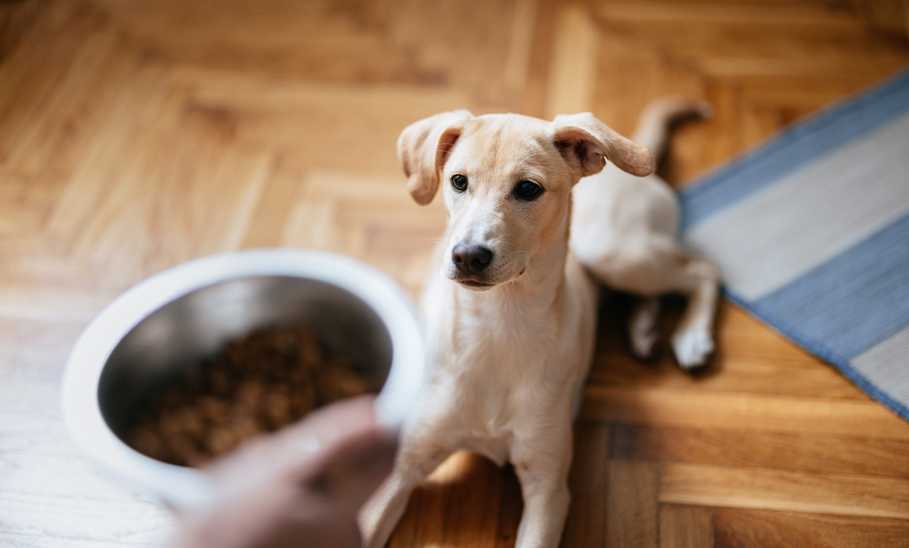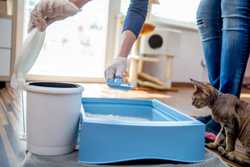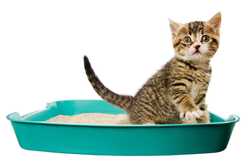How Much Food Should I Feed My Dog to Keep Them Healthy and Happy?

Our evaluations and opinions are not influenced by our advertising relationships, but we may earn a commission from our partners’ links. This content is created by TIME Stamped, under TIME’s direction and produced in accordance with TIME’s editorial guidelines and overseen by TIME’s editorial staff. Learn more about it.
Most dogs love to eat, but how much you should feed them depends on a lot of things. In addition to feeding your dog quality food, the amount of food and frequency of feeding are also hugely important.
There is no one-size-fits-all chart or answer for how much to feed because dog foods vary in caloric content, and a pet’s nutritional needs are impacted by various factors. These include (but aren’t limited to) life stage, breed, body condition (underweight, normal weight, or overweight), and activity level.
As a veterinarian with 20 years of experience, I wrote this article to cover the basics of how much to feed dogs—from puppies to seniors—to provide you a better understanding while shopping for your furry friends, and so you can have an informed conversation with your veterinarian.
Dog food bags have a chart on the back, but how much it says to feed will vary from one food to another. This is because dog foods can vary widely in caloric density. To find how much to feed your dog per day, find their current weight on the chart and read the corresponding amount of food. If it’s a range, talk with your veterinarian about how much your dog should eat or calculate it, which I’ll discuss later.
The amount of cups listed in the chart is usually how much your dog should eat per day, not per meal, but read the directions on the bag to be sure.
Divide the number of cups by the number of meals your dog eats in a day. If your dog should get two cups a day and you feed twice a day, you’ll feed one cup in the morning and one cup in the evening. For convenience, you can portion out the food ahead of time in containers. For even greater convenience, get an automated feeder that allows you to set portion sizes and feeding times. Some are even app-enabled, like the Feeder-Robot, from the makers of the Litter-Robot 4.
Lifestage refers to whether your dog is a puppy, adult, or senior. The caloric requirements for each stage are different because puppies are growing and have increased nutritional needs, whereas adults and seniors are not.
Senior dogs may also be less active (there are exceptions), though even adult dogs who aren’t seniors yet could be less active due to being overweight or neutered/spayed.
And last, some adult dogs who are more active than their counterparts may need more food.
Some breeds are inherently more active, such as Jack Russell terriers, border collies, and Australian cattle dogs. Others tend to be generally less active, such as Japanese chins and Pekingese. The breed of your pet will impact how many calories it needs per day.
It’s important to know a dog’s body condition score, which is an assessment that indicates if a dog is underweight, normal weight, or overweight. Underweight dogs will require an increased amount of calories per day compared to dogs who are overweight or of normal weight.
Dogs who are more active require more calories per day than dogs who are more sedentary.
Dogs who have been spayed or neutered can have a slower metabolism than dogs who haven’t been (intact), resulting in decreased caloric need. Some dogs, however, can remain quite active after being spayed or neutered.
Like most mammals, pregnant and nursing dogs will need more calories because of the increased energy demands put on the body.
Certain medical conditions, like hypothyroidism or cancer, can cause a dog to need fewer or more calories than a healthy dog.
I understand the general dislike of math and the convenience of charts, but the best way to determine how much to feed your adult dog is to calculate it.
One way to calculate calories is with a mathematical formula, which you or your veterinarian can use. You can calculate your dog’s baseline number of calories (their resting energy requirement or RER). This is how many calories they need to be a couch potato. You can also calculate their maintenance energy requirement (MER), which takes activity level into account. And don’t forget that dry dog food charts don’t consider if you’re feeding wet food and treats, so you’ll have to account for them as well. That’s something your veterinarian can help you with.
Another way to determine how much food your dog should eat is by using a feeding calculator. Feeding calculators can determine your dog’s RER or MER. Some provide both. However, calculators won’t account for pregnancy, lactation, or illness. The best person to consult for feeding dogs in these conditions is your veterinarian.
Calculators usually take into account whether your pet is spayed/neutered or intact, their current weight, and body condition score. Some even take age, breed, and treats into account. If your dog is trying to gain or lose weight, it’s best to consult your veterinarian and not a food calculator.
I’ll concede to this one chart. You can use the World Small Animal Veterinary Association’s (WSAVA) maintenance energy requirement feeding chart, though this is for dogs who are at their ideal weight. The chart should be used as general guidelines because the calories may be too high or too low, depending on the individual.
One of the easiest ways to find out how much to feed your pup (besides talking with your veterinarian) is by buying quality dog food for puppies that are breed-appropriate (e.g., a large breed puppy food or small breed puppy food, etc) and reading the chart on the back. However, if the amount is a range, talk with your veterinarian to ensure you aren’t feeding too little or too much.
After determining how much your puppy needs a day, divide that amount into the appropriate number of meals per day for your dog, which is based on their age and breed. You or your veterinarian can also calculate your dog’s MER.
Be careful with online feeding charts because a puppy’s daily caloric requirement can be up to 25% or even 50% different from what a chart can tell you.
Since the nutritional needs of senior dogs can vary widely due to the presence or absence of medical conditions, varying activity levels, and the effects of medication, simply following the food chart on the back of the bag may not serve your dog well. This is also why I’m not providing a chart like other articles on this topic.
If your dog is active and healthy (including on lab work), talk with your veterinarian about keeping them on a quality adult dog food. The reason is that, just like senior people, senior dogs tend to lose muscle mass, and food for senior dogs often doesn’t contain enough protein to support maintaining muscle. You can read more about that in my guide on senior dog foods.
It’s best to calculate your dog’s daily caloric requirement and then do the math to determine how many cups that is. Each bag of dog food tells you how many calories per cup the food provides, which varies from one food to another. One cup of Food A is unlikely to be the same number of calories as Food B. If you’re also feeding canned food and treats, you’ll have to account for them as well. Since we’re not all math lovers (I’m not), your veterinarian can help you determine how much your dog should eat per day.
The frequency of feeding varies by breed. Puppies under three months old aren’t able to fully regulate their blood sugar and can develop low blood sugar (hypoglycemia). Toy breeds are particularly prone to hypoglycemia because they also have a higher metabolic rate than larger breeds. Consequently, they need to be fed more frequently. Hypoglycemia can cause seizures, though you might first notice weakness or disorientation.
Some large and giant breeds—such as German shepherds, Weimaraners, Great Danes, Dobermans, and St. Bernards—are prone to bloat, and feeding several smaller meals instead of two bigger ones can help reduce the chances of this occurring. Talk with your veterinarian to see if you should be doing this.
Stick to a consistent feeding schedule, and if that’s challenging, consider a feeder with a timer that portions out food. If you’re home when your dog eats, give them 30 minutes of uninterrupted time to eat, preferably somewhere quiet with few distractions. Pick up unwanted food after 30 minutes. This encourages your dog to eat when it’s time. It also prevents other pets in the house from eating it later. However, I don’t recommend picking up the food for toy and small breed puppies since they’re prone to hypoglycemia. If your puppy — especially a toy or small breed — isn’t eating their food, talk with your veterinarian right away.
If your adult dog isn’t eating all their food at each meal, things to consider are it might be time for a fresh bag of food or a change in diet. If you don’t keep your dog’s food in a sealed container or closed with a clip, it may have gone stale. It’s also possible they would prefer to eat at a different time of day, which can be accommodated with a timed feeder. But for a dog who repeatedly doesn’t eat, medical issues should be ruled out by your veterinarian.
If you do change diets, make sure to do a gradual transition over seven to 14 days (depending on how sensitive your dog’s stomach is). And don’t forget to check the calories per cup of the new food since that will affect how much you feed.
If you’re looking for new food suggestions, we have guides on dog food brands, wet dog food, food for sensitive stomachs, and dog food for allergies.
To reduce distractions, try to feed your dog somewhere quiet and in the same place each time. If you’re crate training your dog, you can also feed near or in the crate.
It’s important to feed the proper amount of food so your pet receives the correct amount of calories for their age, activity level, and individual health needs. It also reduces the chances of obesity and other health problems later in life, such as diabetes and arthritis. For toy and small-breed puppies, getting the right amount of food at the appropriate intervals prevents hypoglycemia.
The information presented here is created by TIME Stamped and overseen by TIME editorial staff. To learn more, see our About Us page.



